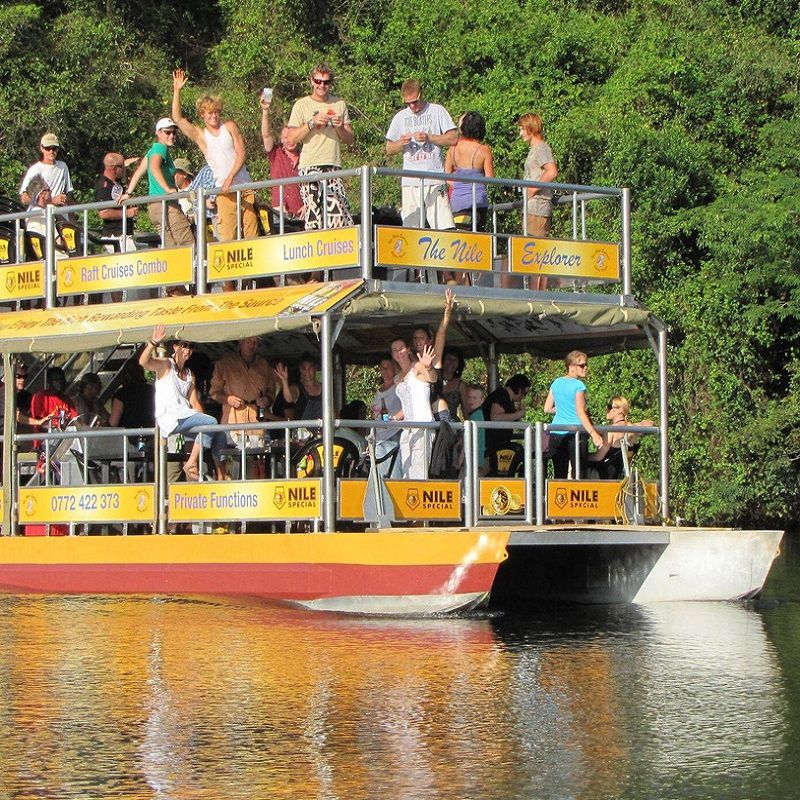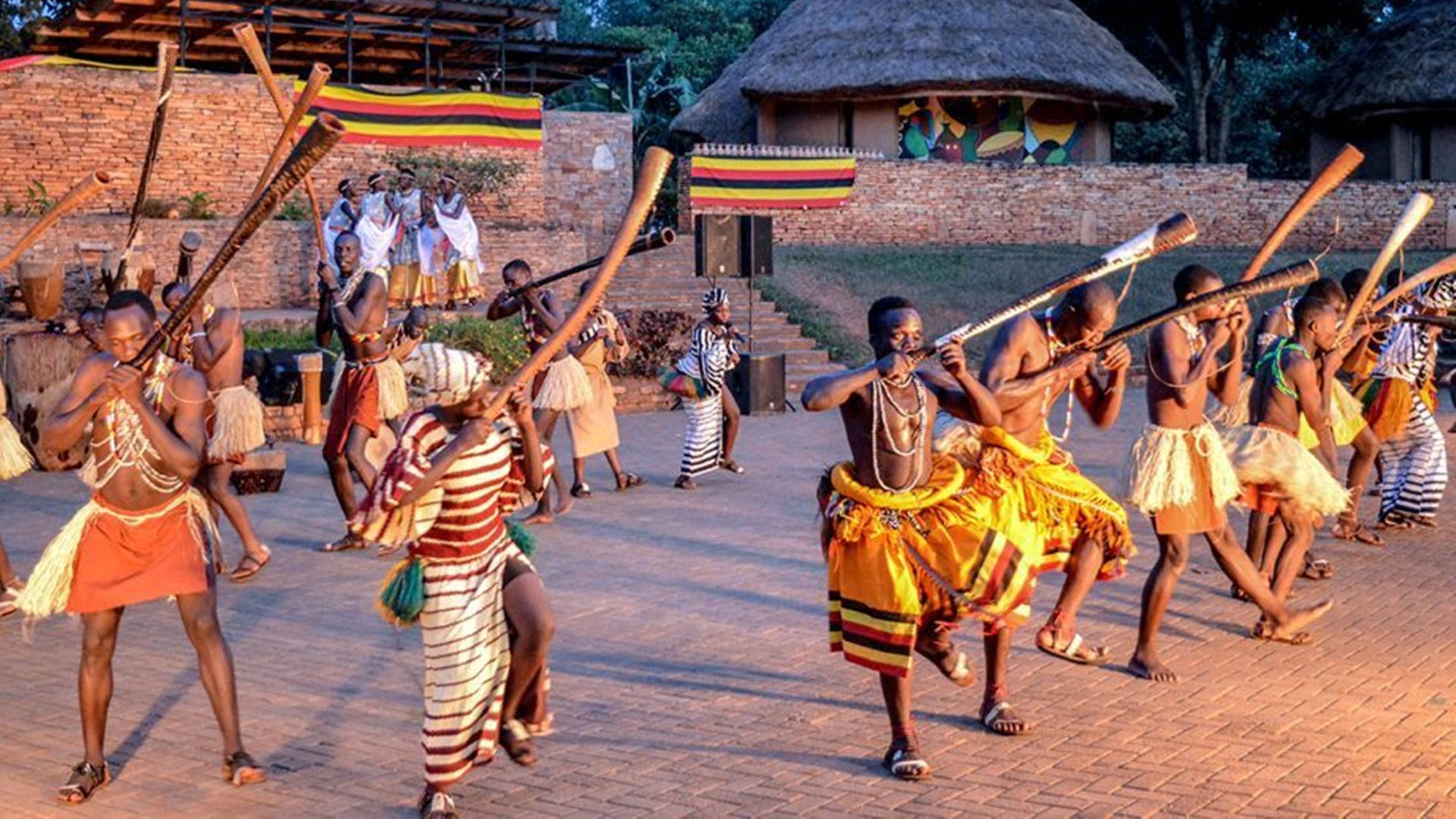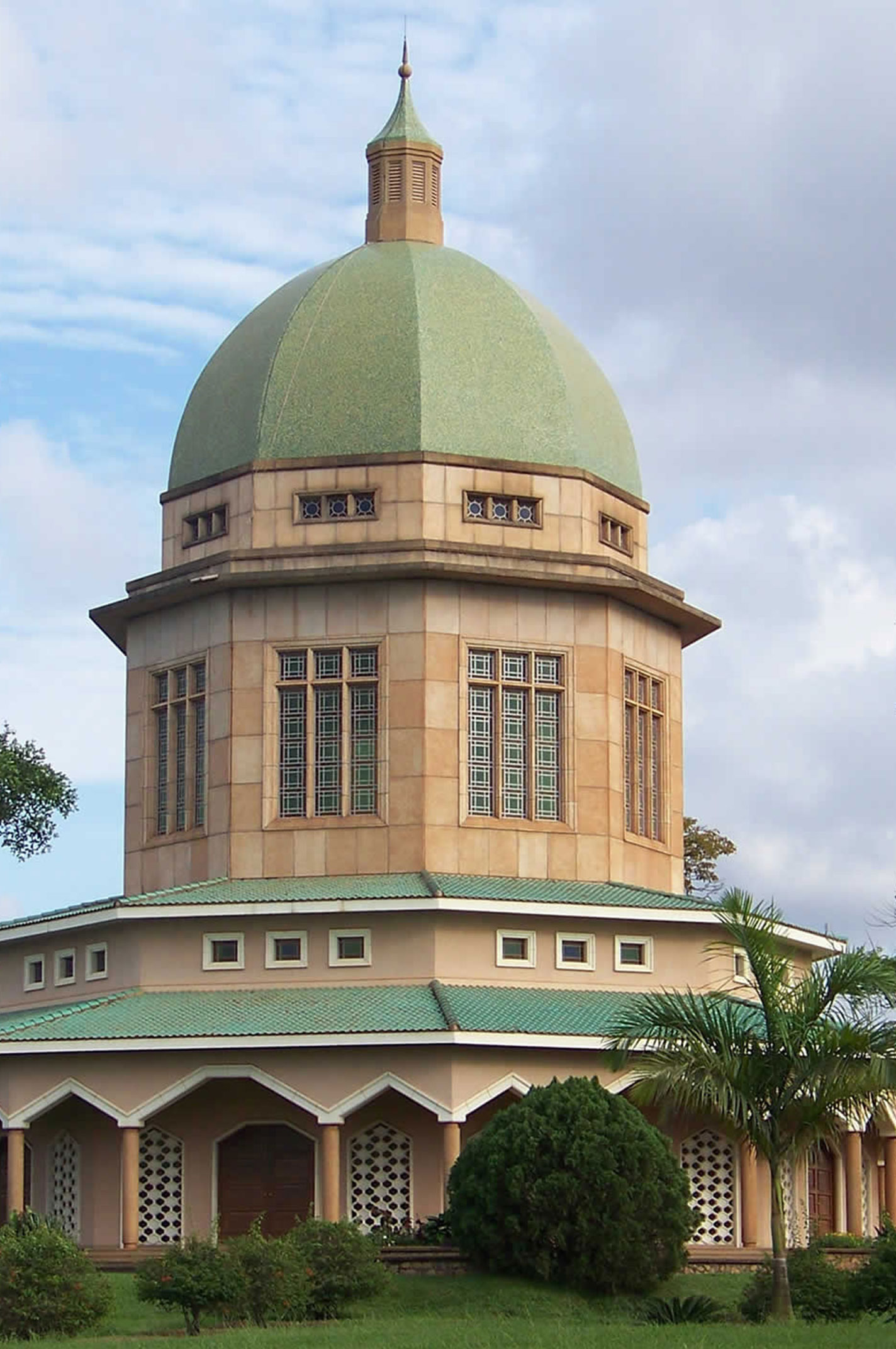Queen Elizabeth National Park is the most accessible savanna wildlife reserve in western Uganda. At almost 2000 square kilometers it represents a really substantial tract of diverse Rift Valley scenery.
The northern part of the reserve straddles the Equator and contains broad open savanna grasslands, where herds of buffaloes and elephants can often be seen. The wildlife may not be prolific in QUEEN ELIZABETH NATIONAL PARK, but it has recovered remarkably since being decimated during the Amin regime of the 1980’s. Strangely the national park is divided into a number of sub-sectors which are entered through separate gates. Outside these areas one gets the feeling that the levels of conservation and protection are rather more vague.
To the west of the main transit road the landscape is pocked by a rash of shallow volcanic craters, several of which contain seasonal lakes. A network of small tracks lead to some spectacular viewpoints. This Mweya area of the park is bisected by the Kasinga Channel, which connects Lake Edward and Lake Albert. Motorboat safari along this channel is considered to be a major highlight of the reserve and often provides the chance to see buffaloes, elephants, hippos and crocodiles at close quarters, plus a host of bird-life.
Forming part of the north-east border of the reserve, the Kyambura Gorge is a modest geological feature filled with an evergreen forest which is home to an isolated population of chimpanzees. The chances of good sightings are reasonable, although not as good as Kibale Forest, so visitors tend to trek in both locations. The hills to the east of this part of the reserve are covered with agriculture, the farms come right up to the border of the reserve, but the hilltops do provide great views out over the reserve and are also home to a number of accommodation options.
The journey through the southern part of the reserve is a straightforward transit, there is generally very little to see in the way of wildlife. Despite this being the major safari route through the west of the country, traffic is remarkably light throughout the year. At the turn-off to Ishasha, there is significant human settlement inside the reserve, which seems rather strange, but once through the gate into this southern sector the landscapes once again open up and we are again back on safari. Even in this supposedly prime area, the wildlife is not particularly impressive. There appears to be good numbers of animals around, but finding them amongst the long grass can be a real mission and when you do, they can be very skittish, especially the lions and elephants. A real highlight of this Ishasha area are the Ugandan kobs, which are closely related to Zambia’s iconic pukus. This part of western Uganda used to witness mass migrations of this animal up and down the Rift Valley to rival the Serengeti Migration.
[masterslider id=”1″]
What to do & see in Queen Elizabeth National Park
Tree climbing lions

It is somewhat uncommon for lions to actually climb trees. There are no more than 2 populations in whole world of such lions that do actually climb trees as one of their day after day behavior. One of these populations is found within the Ishasha sector which is found in the south part of the well known Queen Elizabeth National Park within Uganda. The other population is found in Lake Manyara National Park in the Southern part of Tanzania.
It is supposed that this type of lions climb trees as a way of protecting themselves against the numerous biting tsetse flies on the ground level, whereas other people claim the they actually climb into the branches to escape from the heat on the ground and enjoy the cool breeze; nonetheless the reason why they climb up into the tree branches remains unknown.
Visitors generally end up visiting the Ishasha region primarily to see the population of the resident Tree Climbing Lions although they are also rewarded with views of other wildlife species.
Chimpanzee trekking
Queen Elizabeth National Park is among of the most remarkable national parks within Uganda for outstanding Wildlife as well as Bird-life, it also a perfect place to enjoy chimpanzee tracking / trekking done within the Kyambura Gorge where there are several habituated Chimpanzees. The scenery within this gorge is very spectacular and there are several other mammals plus birds to be seen as you start out in the morning on your chimpanzee trekking voyage.
This Chimpanzee Tracking activity within the Kyambura Gorge that gorges for just a small cost can be included to any other Uganda Safari activity within Queen Elizabeth and offers you a holistic adventure of this splendid national park.
Chimps normally stay in groups known as troops, of about 30 – 80 individuals. The large groups consist of smaller, very supple groups of fewer members, possibly all females, or all males or at times mixed.

Game drives in the park

This activity involves the visitors to drive through the park while viewing animals. The Park has several spots of well maintained game viewing tracks.
This park has got over 200 kms of well maintained game tracks .
For a classic African safari experience, the tracks through Kasenyi, the North Kazinga Plains and the Ishasha Sector offer virtually guaranteed buffalo, antelope and elephant sightings, along with warthogs and baboons. Taking an experienced guide in the early morning or at dusk is the most successful way to track down a pride of lions, and maybe even the odd leopard.
Bird watching
Uganda is among the most well-known birding destination in the whole of Africa. It has a diversity of bird species a number of which are not easily spotted in any other part of the African continent. There are several birding destinations within the country and these have made Uganda certainly one of the finest birding paradises. There are more than 1010 bird species all of which you certainly enjoy on a Uganda safari. The various National parks within Uganda are actually the biggest habitat for most of the bird species in the country. As you take time to marvel at the spectacular birds, you will certainly come across a diversity of additional wildlife that will turn your bird watching safari into a very memorable encounter. The most ideal time to spot these birds is actually early in the morning as well as late in the evenings. Queen Elizabeth National park boosts in an excess of 550 species of birds that have actually made it a charming destination for guests that love watching birds.
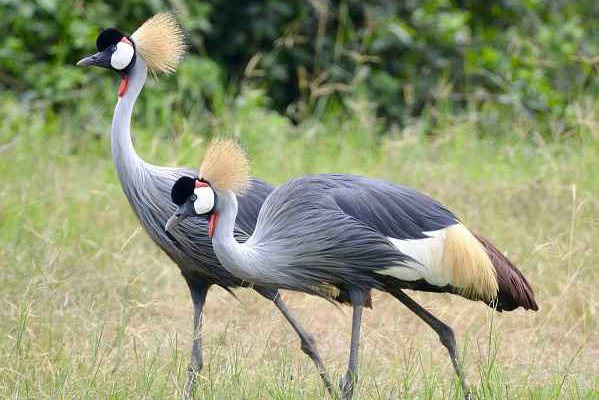
Boat Cruise Kazinga Channel Queen Elizabeth NP

The boat trip within Queen Elizabeth National Park is done on the impressive Kazinga Channel a 40 kilometer water long natural channel that links Lake Edward plus Lake George. Normally the boat sets off every day at either 09.00 am local time or at 2:00pm in the afternoon – local time. This launch cruise may take anything from 2 – 5 hours to well explore the water and the wildlife along the shores of the Kazinga Channel. There are professional guides right on the boat who will be give you all the necessary information pertaining this safari or tour as well as answer any questions that may arise about the wildlife or anything else. In addition, the professional as well as well experienced guides will point out any wildlife which you may have failed to notice. Taking a cruise on the Kazinga Channel is among the highlights of Uganda safaris within Queen Elizabeth Park.
Wildlife Research Tours within Queen Elizabeth National Park
For all visitors that desire to have an up close encounter with the wild fauna in Africa, then a research trip is something I greatly recommend as it will be worth the experience and a very rewarding adventure. This actually is a new and exceptional experience that offers visitors an opportunity to actively directly participate in keeping an eye on not only a number of exotic birds but different mammals as well that live within this park. Normally this is done using locator – devices and gain knowledge of habituation calls, in addition to monitoring the weather, their behavior as well as the surroundings. The finds are added to the databases of the researchers, hence contributing very important information to the general understanding of Africa’s wildlife ecology in particular that in Queen Elizabeth National Park, and assisting to conserve this amazing ecosystem.
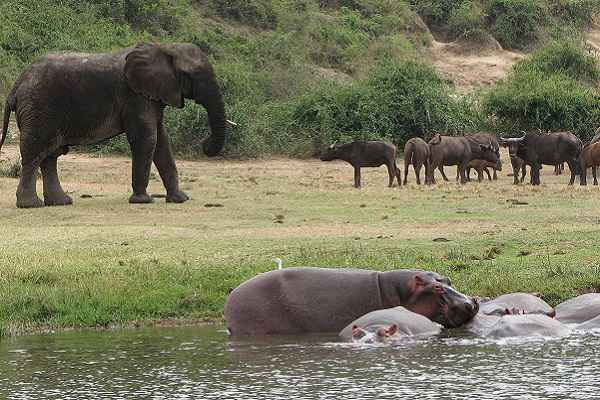
Getting there
Queen Elizabeth NP is located about 410km/255mi north of Kampala. The direct drive takes about six hours, but your itinerary will most likely include some parks on the way. It is also possible to fly to any of the nearby airstrips of Kasese, Mweya or Ishasha by scheduled or chartered aircraft from Entebbe International Airport or Kajjansi Airfield near Kampala.
You will enter Uganda at Entebbe International Airport (EBB), about 46km/29mi from Kampala, the capital city. Generally, your tour operator will arrange for your pick-up from the airport, and organize any further transportation required as part of your safari package.
